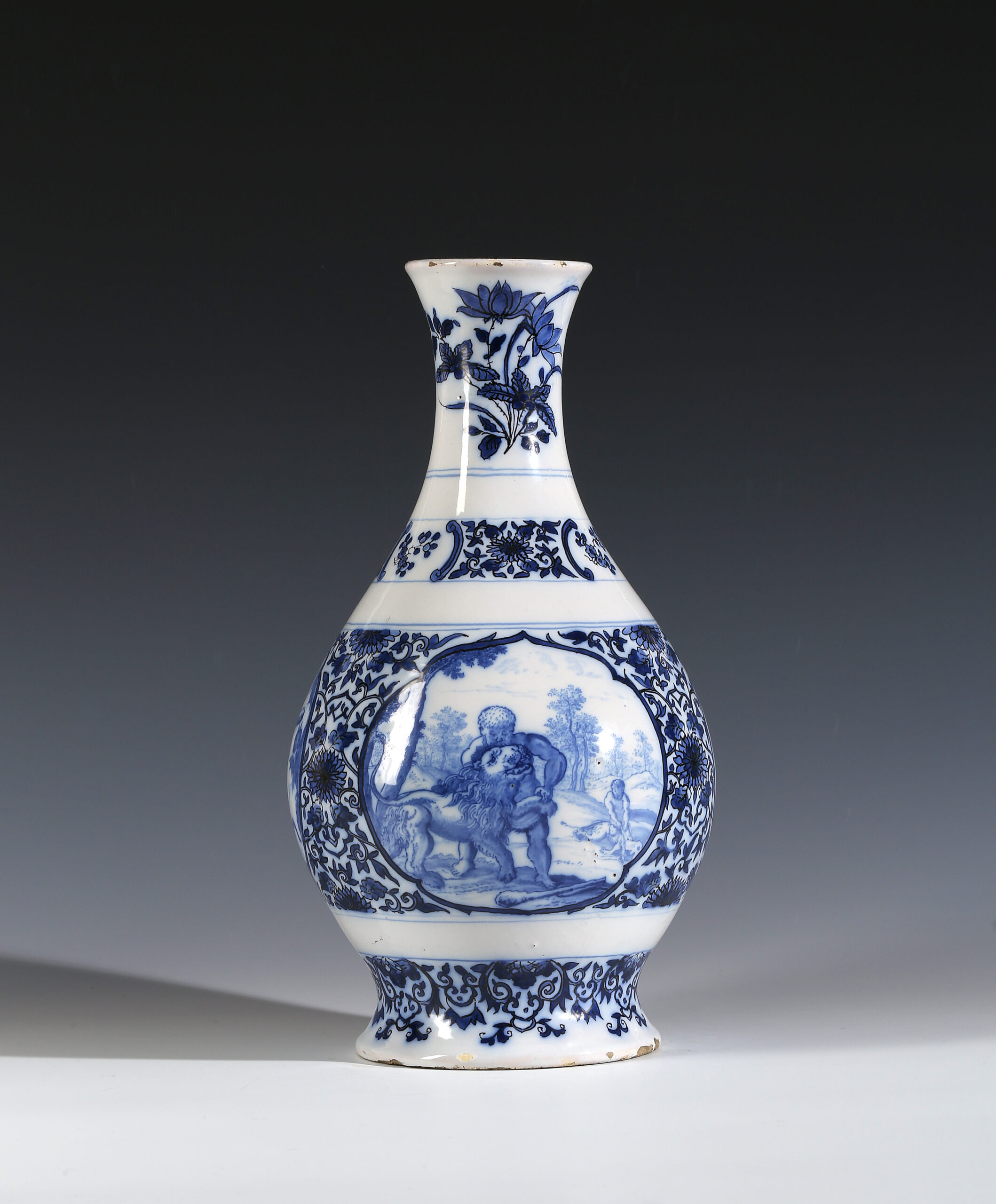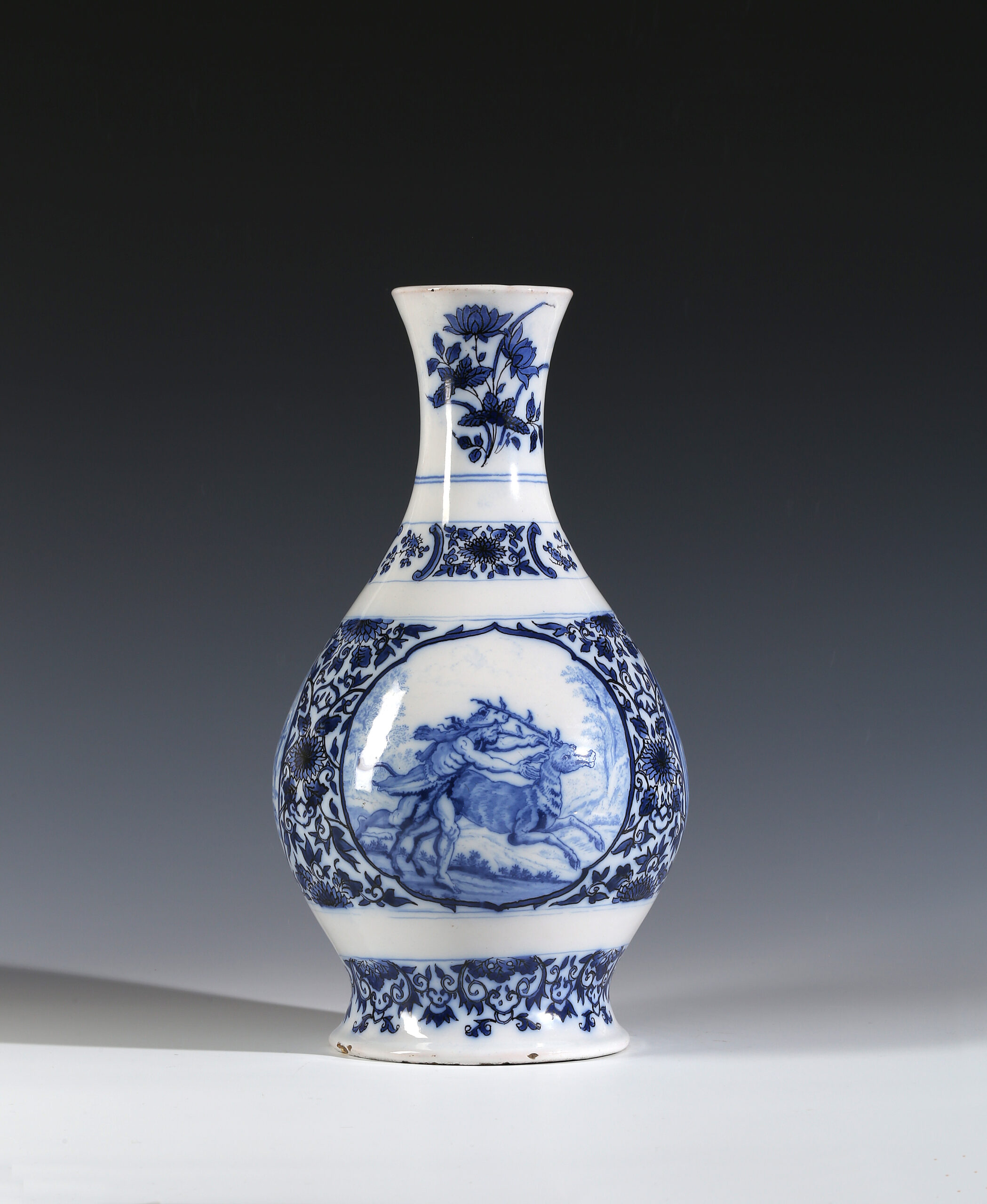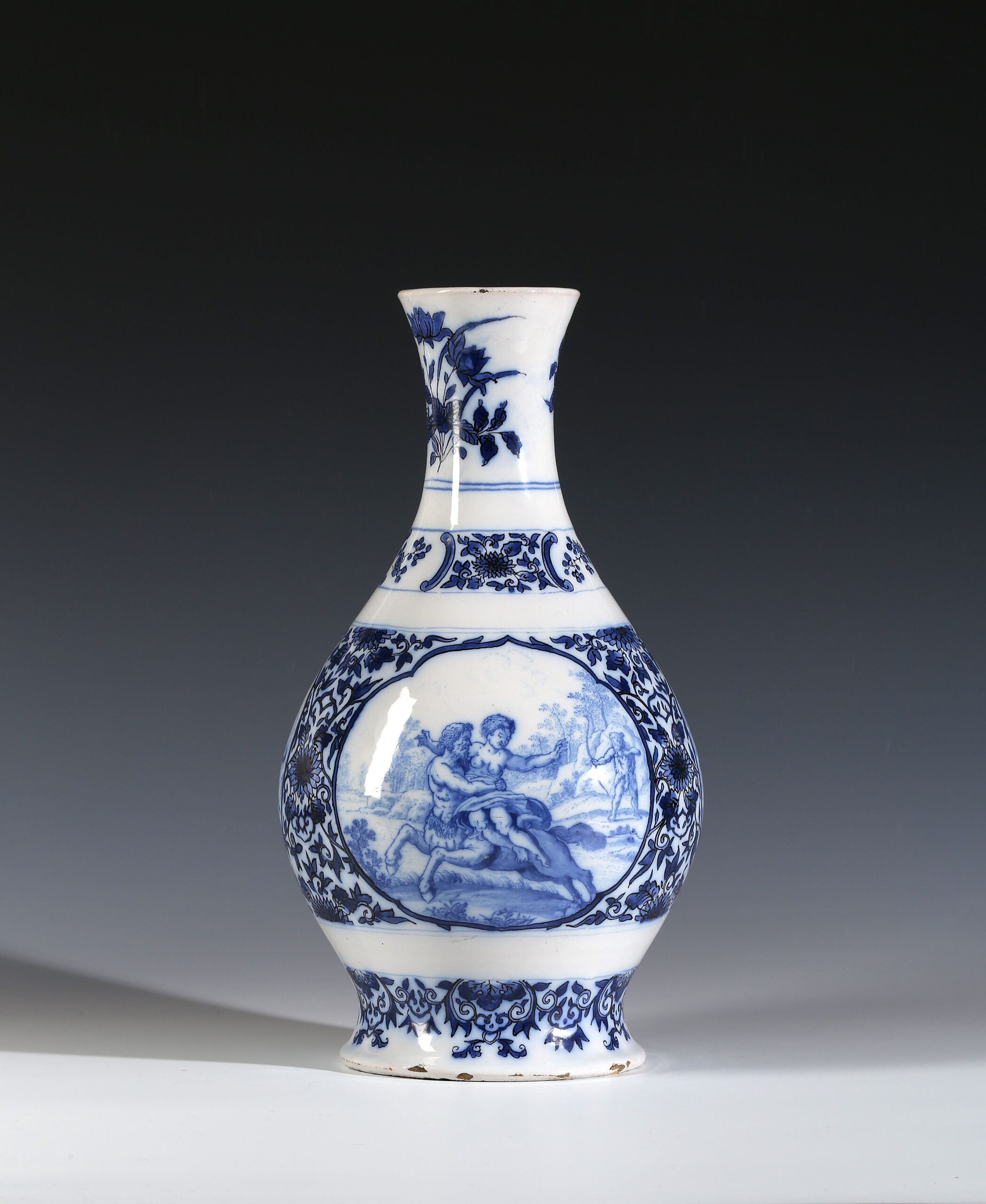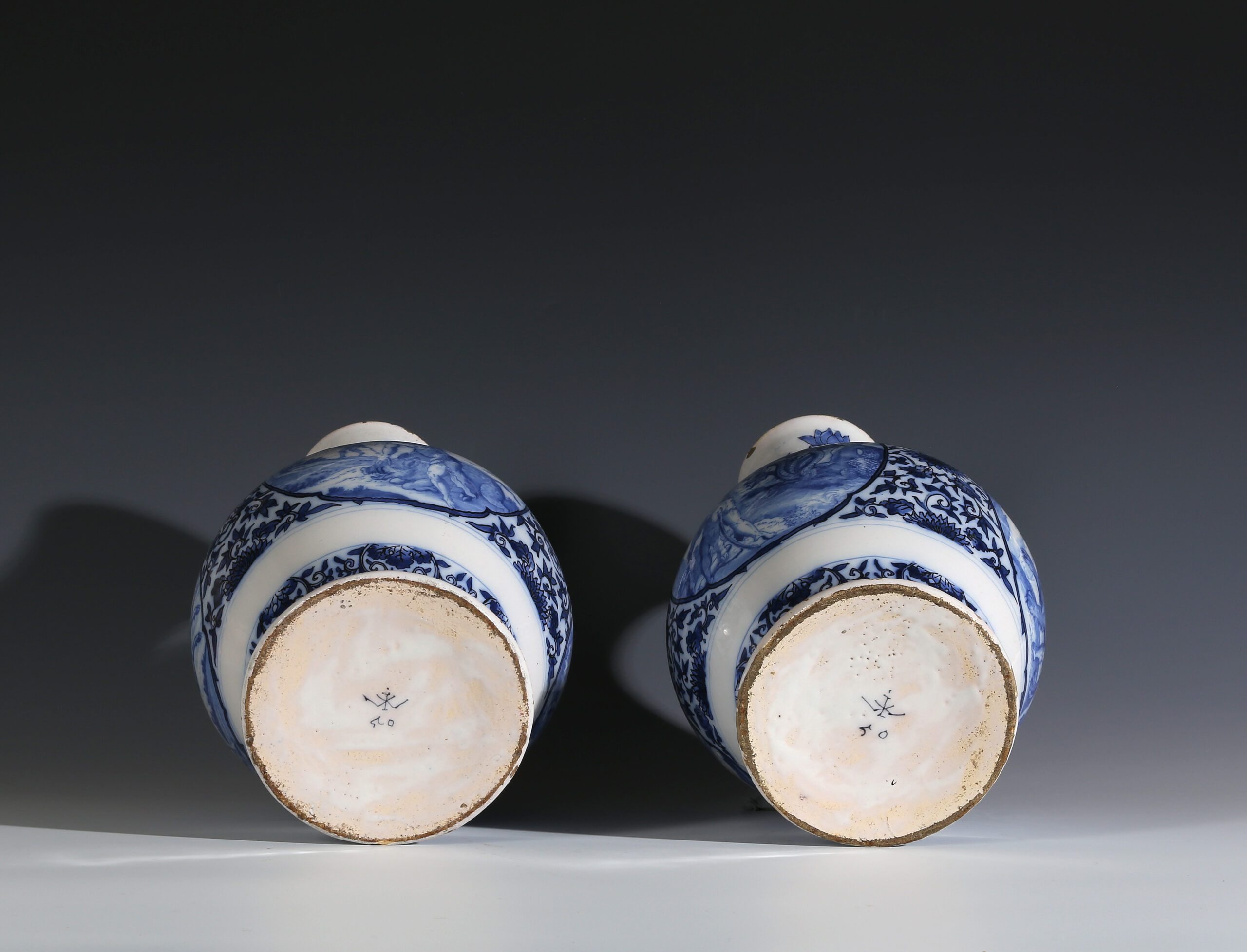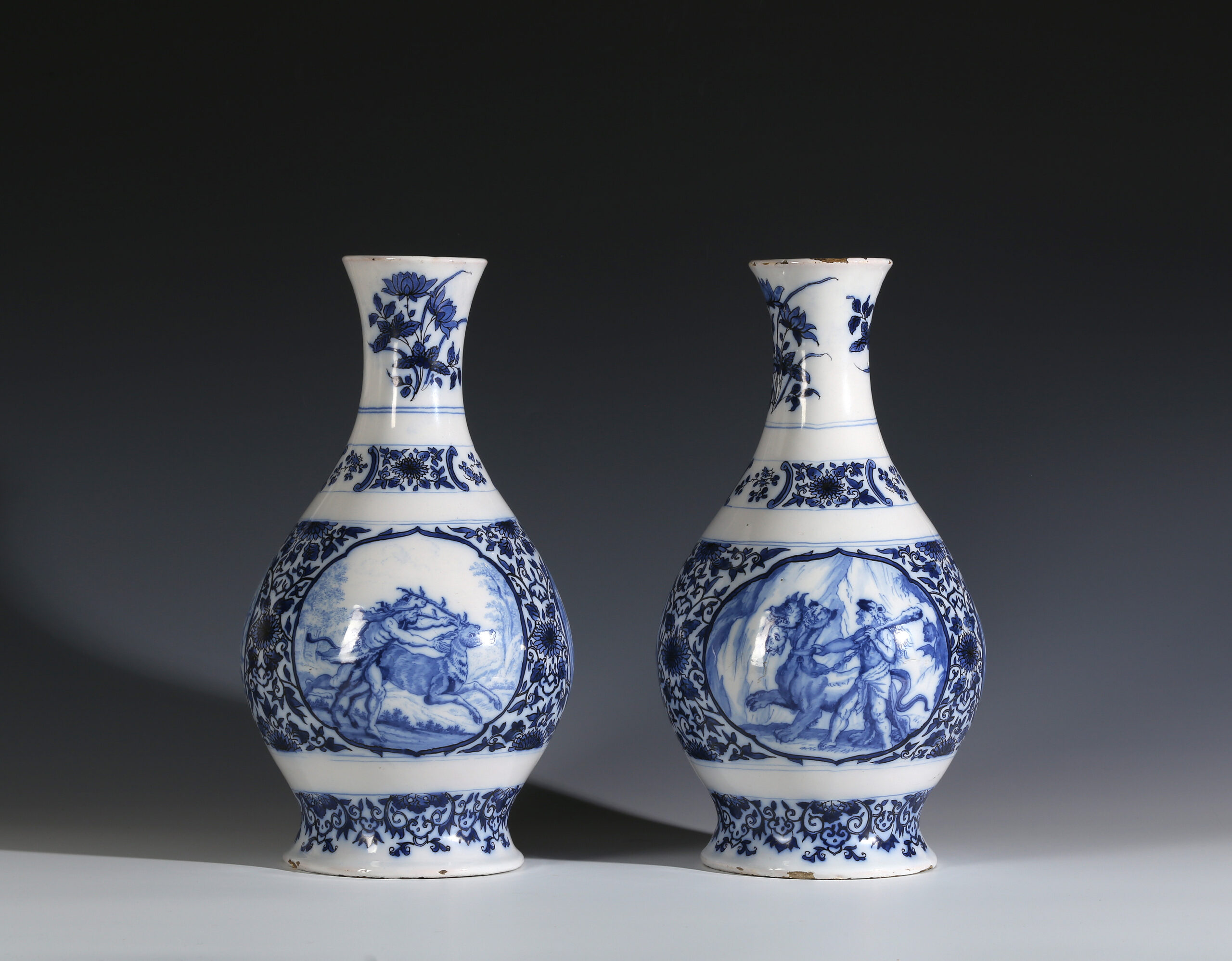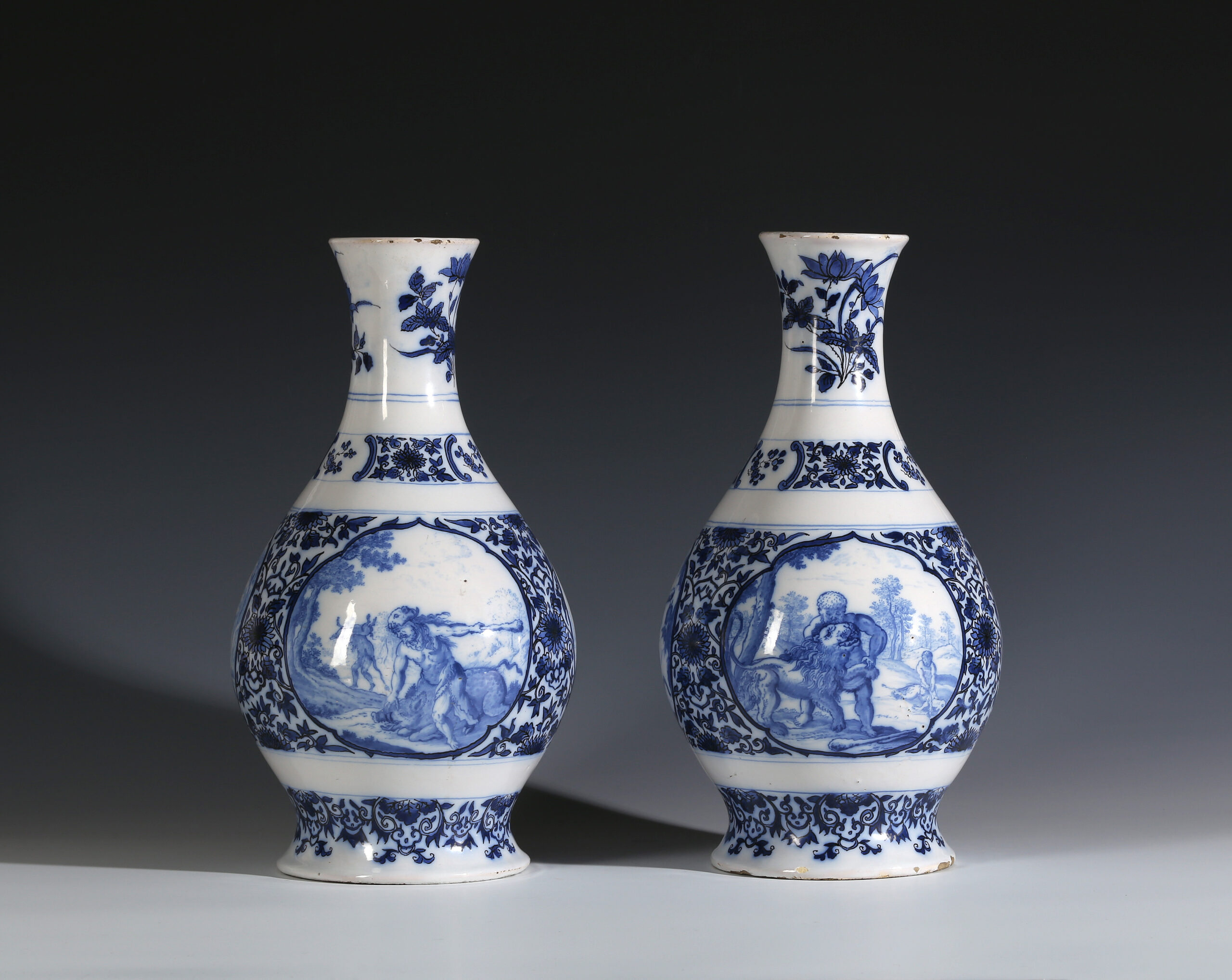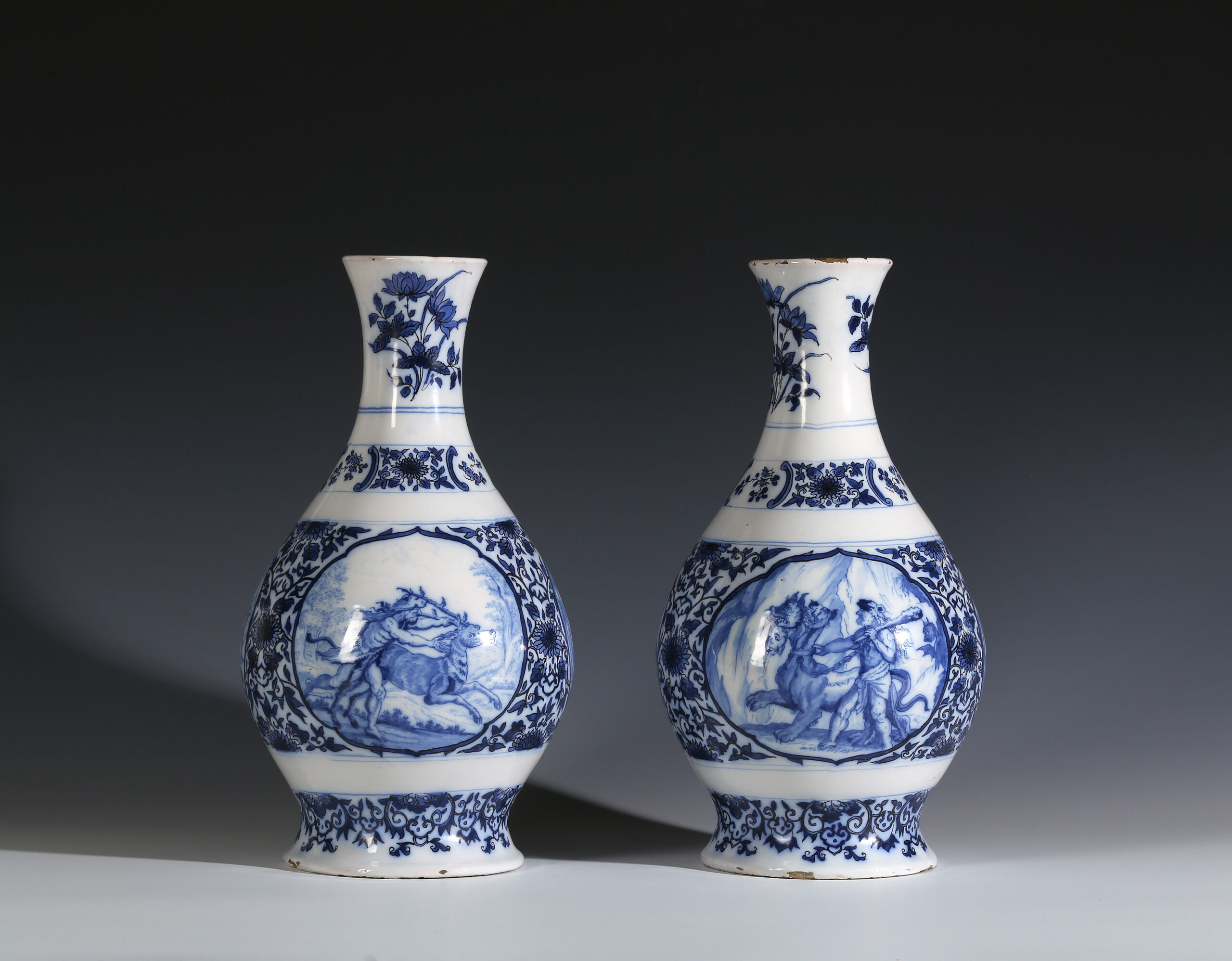
These recently discovered vases represent the very pinnacle of blue and white production from the most accomplished of the Delft workshops. At this time, the Het Jonge Moriaenshooft factory was run by Jannetge, the widow of Jacob Wemmersz Hoppesteyn, and her son Rochus. Their products are characterised by a particularly fine white glaze and excellence of painting.
The baluster bodies painted in blue with carefully delineated ‘zwarte trek’ (outlines in blackish blue) each with three cartouches enclosing scenes form the life of Hercules set against a broad Chinese Ming-style chrysanthemum scroll band, within further bands of Chinese ornament.
The scenes are taken from engravings by Simon Frisius after Antonio Tempesta. Five are of the Labours of Hercules and one from Ovid’s Metamorphoses of Hercules witnessing the centaur Nessus carrying off his wife Deianeira. The labours depicted are the Slaying the Nemean Lion and the Lernean Hydra, the Capturing of the Golden Hind, the Erymanthian Boar and Cerberus.

Nessus and Deianeira, Frisius after Tempesta, Rijksmuseum (RP-P-1882-A-6112)
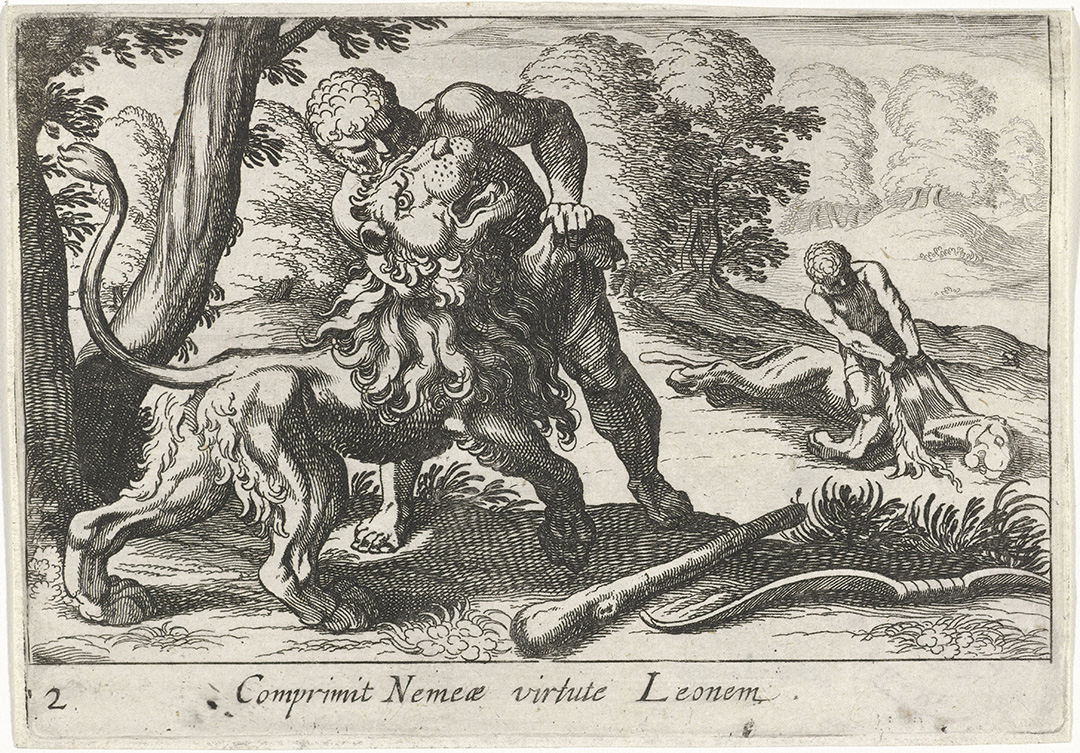
Nemean Lion, Frisius after Tempesta, Rijksmuseum (RP-P-OB-52.348)

Lernean Hydra, Frisius after Tempesta, Rijksmuseum (RP-P-OB-52.349)

Golden Hind, Frisius after Tempesta, Rijksmuseum (RP-P-1882-A-6105)

Erymanthian Boar, Frisius after Tempesta, Rijksmuseum (RP-P-1882-A-6107)

Cerberus, Frisius after Tempesta, Rijksmuseum (RP-P-OB-52.358)
Seven other vases of this form with similar decoration, but in the coloured ‘mixed technique’ invented at the factory, are known. Ours are the only blue and white ones and are somewhat larger at 35 cm rather than the coloured version which range between 31.0 to about 33.00 cm.
The other vases are:
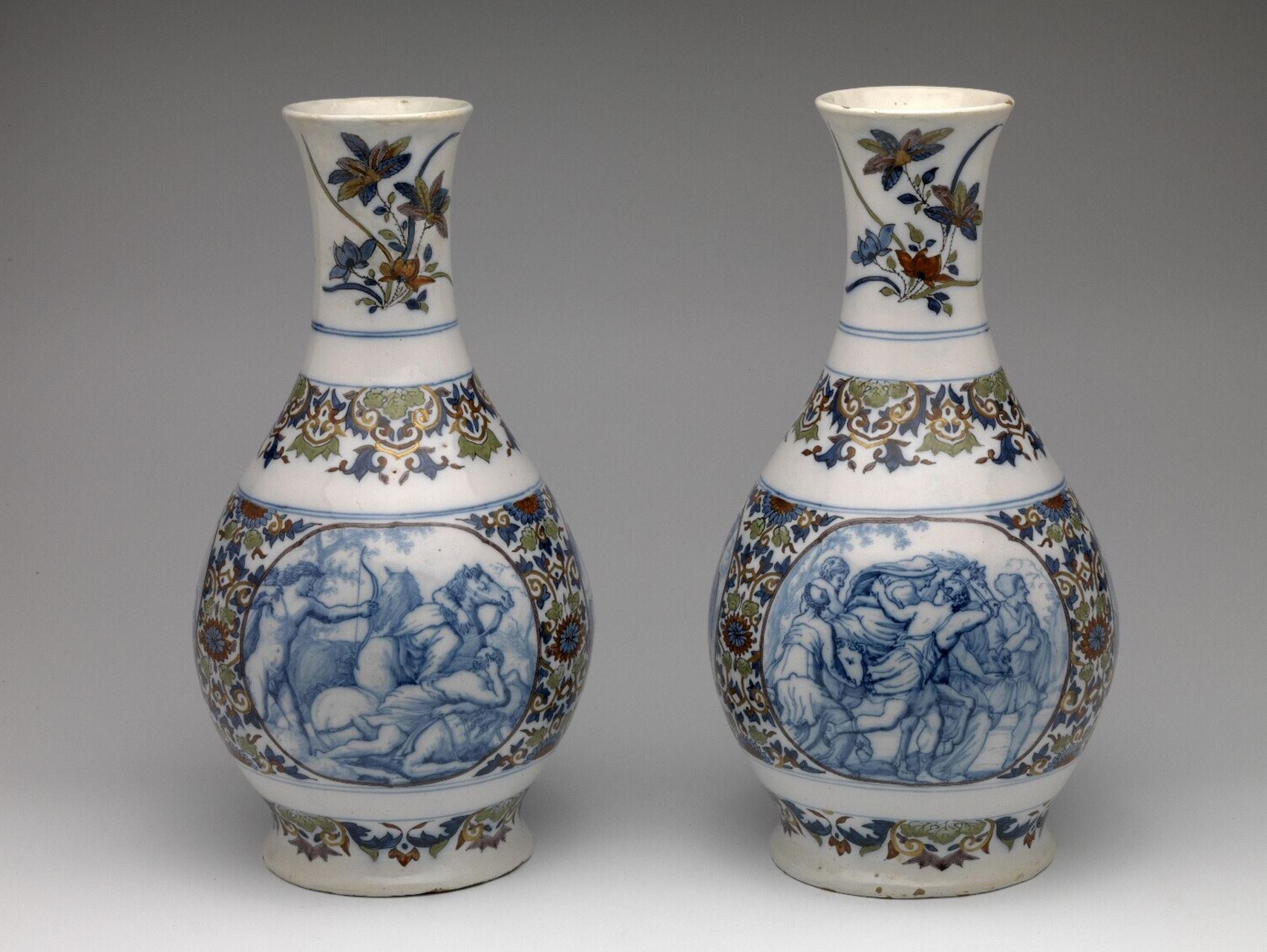
- A pair in the Boijmans van Beuningen, Rotterdam, c. 33 cm high, painted with scenes from the story of Niobe.
https://www.boijmans.nl/collectie/kunstwerken/12751/siervaas
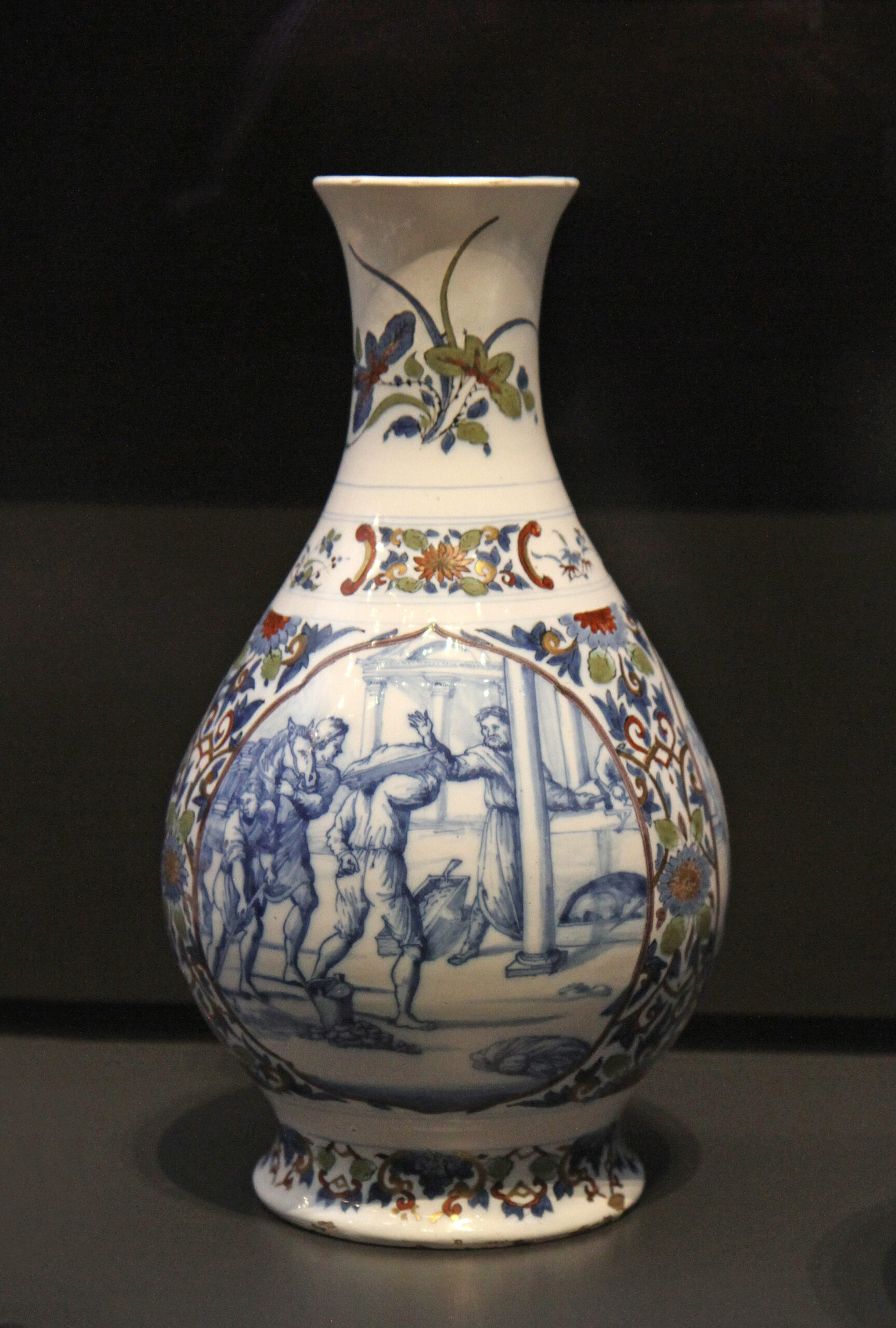
- single vase in the Rijksmuseum, Amsterdam, 31.0 cm high, painted with biblical scenes.
https://hdl.handle.net/10934/RM0001.COLLECT.16166
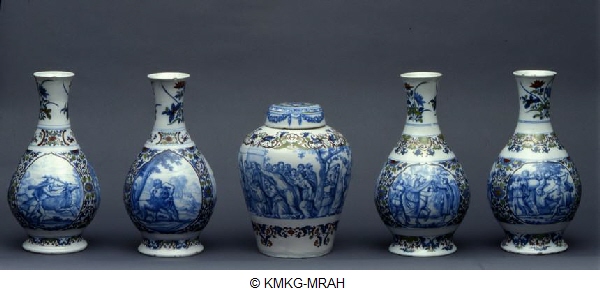
- Two pairs in the Musées Royaux d’Art et d’Histoire, Brussels, one pair painted with biblical scenes and the other with the same scenes from the life of Hercules that appear on our vases.
We estimate the size of these at around 33 cm by comparison to the relate covered vase illustrated together on their website.
Perhaps fewer than seventy Hoppesteyn pieces are recorded which bear either the marks of Jacob Wemmersz or Rochus Hoppesteyn making them amongst the rarest of all Delft wares.
Condition:
Small chips to rims. No restoration
Provenance:
Earls of Howth and Gaisford-St Lawrence Family
Howth Castle, Howth, County Dublin
Fonsie Mealy Auction, 8 September 2021, lot 525
References:
Adam von Bartsch, Le Peintre graveur, 1818, Vol. XVII – p. 151
D.C. Mees, Kunstnijverheid 1600-1800 en Tegels / Applied Arts 1600-1800 and Tiles, (Boymans – Van Beuningen, Rotterdam 1997), p. 58
Links to the Rijksmuseum engravings:
Nessus carrying off Deianira https://hdl.handle.net/10934/RM0001.COLLECT.113263
Hercules killing the Lernian Hydra https://hdl.handle.net/10934/RM0001.COLLECT.113243
Hercules Capturing the Erymanthian Boar https://hdl.handle.net/10934/RM0001.COLLECT.113258
The Ceryneian hind of Arcadia is captured by Hercules https://hdl.handle.net/10934/RM0001.COLLECT.113256
Hercules Captures Cerberus https://hdl.handle.net/10934/RM0001.COLLECT.113252
SOLD


